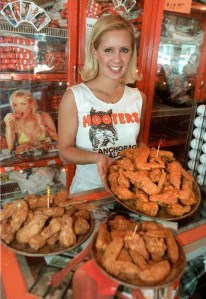Yesterday’s post on extra charges for the various items a guest requests caused me to ponder on a larger scale. It is remarkably common to hear guests say, “I could buy that steak/wine/etc at the store for half that much.â€Â This is the same principle as walking into a car dealership and demanding a price based on the total price of the steel, glass, and plastic contained in the car. In both cases, the price of production goes far beyond the cost of the raw materials. Next week, I will be addressing in detail the difference between the actual cost of an item as simple as a burger and also the actual price of production. When the cost of labor and overhead is factored in, a burger is far less profitable than the average consumer would imagine.
First, it is necessary to establish as a premise that food is a commodity. A meal is comprised of many components each of which has a finite supply. There are only so many acres of wheat or corn being produced. There are also only so much beef, poultry, pork, and seafood being brought to market. This means that supply is more of less the same and therefore demand is what determines the price restaurants pay. The commodity we are all most familiar with is oil. When demand for oil rises worldwide the price rises as well. This is followed shortly by a rise in the price of gasoline. We as consumers understand why this affects gas prices, but rarely do we relate it to restaurants.
Read the full post at The Manager’s Office




I remember when the wings were thrown into pots for stock and cheaper than anything else. Now it is like the cost has skyrocketed. It is cheaper to buy legs and thighs than wings.
Not too long ago a guy asked the price for a large glass of milk. When I told him, he said he could buy a gallon of milk at Walmart for that price (maybe in 1970). Without even thinking I said, “So do it.” He not only bought the large glass of milk, but he overtipped, probably because he realized how ridiculous his statement was.
Monday I will break down all the costs associated with his glass of milk. Should be very interesting.
my usual response to “i can get that in the store for half the price is:
1. mentally file under “restuarant rookie”
2. say something like: “albertsons doesn’t pay a zillion dollars a year for for a liquor license. you aren’t paying for the wine, you’re paying for the privilege of being able to sit here and drink — then maybe sue us for the consequences of your own inability to control yourself.”
chicken wings are out of control. i blame food network, and razzed them recently with more razzing planned. but more likely “real” factors to consider in food prices besides simple supply and demand:
1. most food is brought in from thousands of miles away, rather than purchased locally, even if local producers are available. chicken, fish and garlic from china, fruit and vegetables from latin america, cali oranges in florida, etc. agribusiness would rather pay exorbitant transport costs to get food from people who work for $1 a week than pay workers.
2. mass-produced food [e.g.anything from sysco or similar corporate mega-distributors] comes from corporate mega-farms. this makes monopoly power a determinant of prices as much as market power. it’s the same reason we pay 3x more than the rest of the world for medicines.it’s the same reason gas will never be less than $3 a gallon again. why should they, people need it, so they’ll pay for it. and if they can’t get it anywhere else and alternatives are forbidden, there’s no reason to lower the price.
Pingback: The Index « Tips on improving your Tips
Pingback: Independent vs Corporate Restaurant Priorities « Tips on improving your Tips
Pingback: A World Without Tips « Tips on improving your Tips